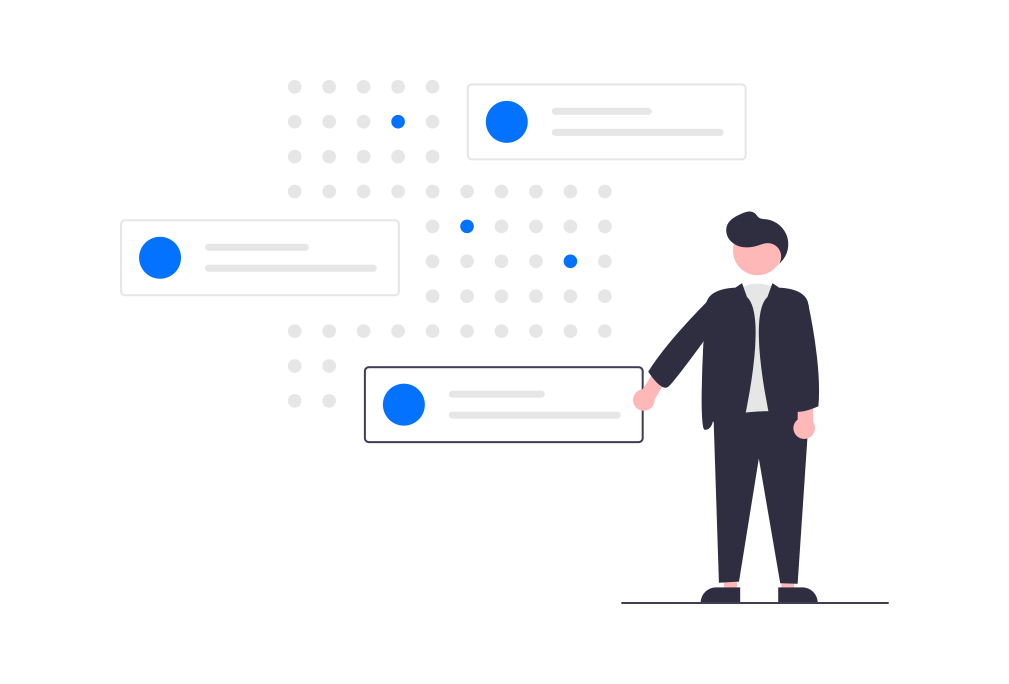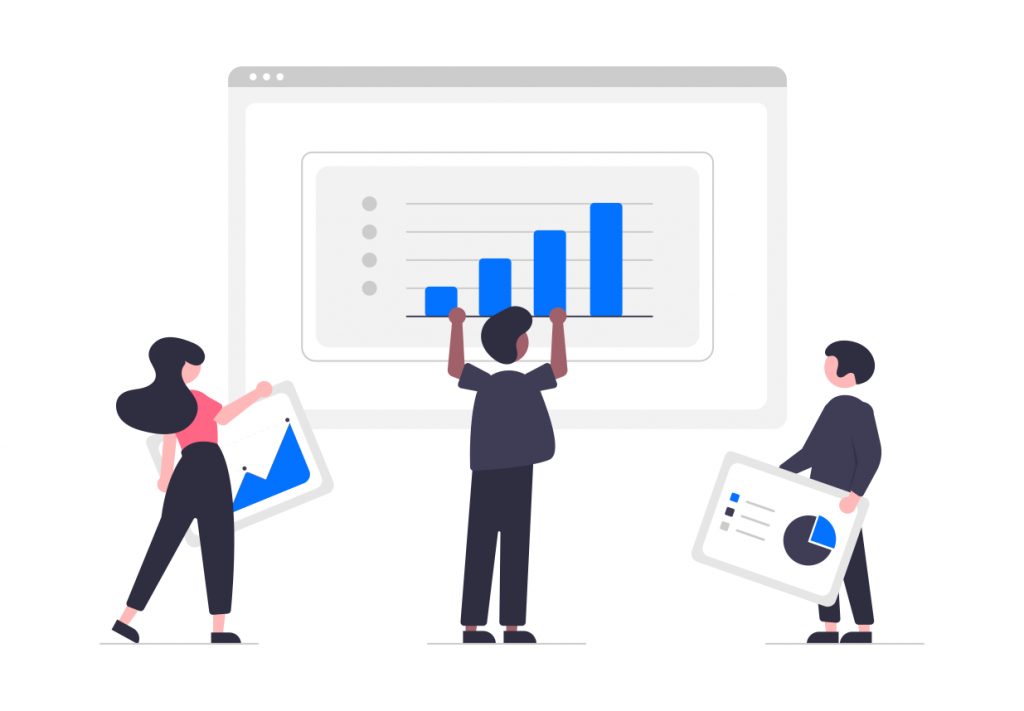RPA FOR ANALYTICS AND DATA GATHERING

Quality data is an organization’s most valuable asset in the digital era since it provides you with critical business insight, allows you to spot patterns, and helps you make calculated decisions that will help you achieve your objectives.
For example, in a McKinsey Analytics survey, half of the corporate participants said that Big Data has improved sales and marketing operations operationally.
Although most businesses have an abundance of data at their disposal, it may often be difficult to obtain, compile, and analyze the data.
FOR WHAT REASON SHOULD I AUTOMATE?
These challenges usually arise when data collection and analysis are performed manually by human staff. Why? It is incredibly difficult to sift through large amounts of data and analyze the findings when this data is in multiple formats and saved across many different locations by different members of your staff. As a result, crucial data and insights often fail to trickle down to a company’s decision-makers, and are essentially wasted.
Robotic Process Automation offers a solution to this common challenge and can help your business streamline its processes, reduce errors, improve employee productivity, and free up valuable time for higher-value tasks.

RPA: WHAT IS IT?
RPA makes use of software that has been designed to automate routine, daily business tasks that would typically need to be completed by a human.
Almost any tedious, repetitive, and time-consuming corporate task can be handled by RPA bots. You’ll be able to redirect your attention to more important chores as a result.
APPLICATIONS FOR DATA COLLECTION AND ANALYZATION
RPA makes use of software that has been designed to automate routine, daily business tasks that would typically need to be completed by a human. Almost any tedious, repetitive, and time-consuming corporate task can be handled by RPA bots. You’ll be able to redirect your attention to more important chores as a result.
More precisely, RPA facilitates the automation of the subsequent tasks:
- Data gathering
- Data input
- Data validation
- Sorting and managing data
- Analytics of data
- Data purification
An illustration of how this would relate to online retailers is provided here:
RPA bots gather information from consumers’ online interactions, including as spending patterns and purchase history. To help their sales and marketing teams, RPA can then be used to integrate data sources, create reports, evaluate the data, and compare it to the store’s product inventory.

WHICH BENEFITS CAN I GET FROM USING RPA FOR?
- ENTRY & COLLECTION OF DATA?
- DATA ANALYTICS?
- Make reports that are more accurate.
- Give higher-value jobs more time.
- Cut down on the possibility of human mistake
- Get data that is easier to understand, more accessible, and more organized.
- Sort datasets
- Establish parameters
- Utilizing your data, generate precise reports.
- Project future user behavior
- Launch simulation software
FOR WHAT REASON SHOULD I AUTOMATE?
This provides you with an accurate overview of your operations and organizational structure, allowing you to determine what is and is not functioning. Armed with these vital insights, you’ll be able to pinpoint areas in which your company needs to improve and implement significant adjustments to internal procedures and the corporate structure.
Other advantages of RPA are as follows:
- Determine critical information far more quickly.
- Learn what is and isn’t working for your clients and your business.
- Reduce the possibility of erroneous analysis and obtain more accurate results.
- Make crucial choices that will ultimately benefit the company.
- Find weaknesses that, if left unchecked, could cause major issues.

SOURCING DATA FROM MULTIPLE SOURCES TO CREATE NEW BUSINESS FUNCTIONS
RPA gives you the opportunity to utilize public or private data to create brand new, automated business processes and functions that your competitors may not have thought of yet, or were unable to perform manually.Like with many manual processes, without automation, these processes are incredibly time-consuming. But with automation in place, scaling these tasks and processes is not only possible, but profitable as well.
Let’s look at some examples…
Using RPA, retailers can create a new system that uses bots to locate merchandise from several vendors. The bots can either auto-bid on specific things or present the results to the merchant so they can make their own bid by using predetermined factors and criteria.
Finding the products that, given the given variables, offer the highest profit would be the goal.
Data analytics may (and should) be used by industrial organizations using RPA at every level of the manufacturing process, from inventory tracking to the supply chain.
RPA can forecast demand and use this information to decide whether to expand or decrease production of particular goods.
Retailers can give personalized product recommendations, discounts, and other promotions by using loyalty and reward programs to collect customer data and sending out automated emails.
A customer’s current position in the buyer’s journey and the products they are viewing can also be used to create personalized chatbots.
REASONS WHY BUSINESS PROCESSES CAN BE IMPROVED WITH RPA-GATHERED DATA
There are two data analytic methodologies that can profit from RPA when utilizing data to examine business processes:
Methodology mining
Traditionally, firms would look at data linked to key performance indicators (KPIs), process documentation, and user interviews while undertaking process mining to better understand business processes and how they are functioning.
Sadly, these techniques have the following drawbacks:
KPIs are frequently too high-level to provide a complete picture.
Process documentation does not explain how a process is operating; rather, it merely describes how it was intended to look.
Depending on the depth of the interviewee’s knowledge, interviews can only yield limited information. However, RPA-generated high-quality data can be utilized to feed automated process mining tools, which in turn can provide a clearer picture of the entire process.


DIFFICULTIES WITH MANUAL DATA COLLECTION AND ANALYSIS
As you can see, every firm may profit greatly from using RPA for data gathering, data entry, and data analysis. What about the other option, though? Is maintaining manual, antiquated processes really so bad? Definitely, and here’s why.
MANUAL DATA GATHERING AND ANALYSIS WITHOUT RPA MAY PROVIDE THE FOLLOWING DIFFICULTIES:
The amount of data that humans can process at once is limited. Bigger companies do, however, tend to have larger, more complex data sets with a greater number of factors involved. RPA bots, in contrast to people, are made to comprehend these complexity and quickly evaluate vast volumes of data.
Numerous intricate manual processes are frequently needed for data entry, analysis, and collecting. As a result, data may end up scattered over various platforms, including online banking, procurement systems, and email inboxes.
RPA, on the other hand, creates data quickly, streamlines system integration, and gathers all of the data into one location.
Nobody likes to work on boring, repetitive activities all day long. Employees frequently feel demotivated and ineffective when they are forced to devote all of their time and energy to these tedious manual activities and are unable to concentrate on more engaging work.
Your employees will be able to put these labor-intensive manual activities on hold and concentrate on more complex assignments that will boost their sense of pride and engagement by using RPA technology.
For the data and insights to effectively support your company, accurate data collection is necessary. You risk missing key information that may have resulted in significant organizational changes that would have benefited the company and your team if your data contains errors and inconsistencies.
When the same work is performed repeatedly, day after day, it is possible for the mind to become fatigued and miss important details, which can result in expensive blunders. Additionally, repetition makes employees bored and reduces productivity because they may find it difficult to concentrate on other crucial tasks.
Any organization, no matter its size, needs to be able to react fast and precisely to any circumstance; sadly, teams cannot accomplish this by relying solely on Excel.
For example, Excel can make it more difficult for your medium- to large-sized firm to grow because it doesn’t have any true process automation or underlying database.
APPLICABLE INDUSTRIES FOR AUTOMATED DATA COLLECTION & ANALYSIS

For critical insights that will inform future decisions, almost all businesses rely on data and analytics. However, automated data collecting and analysis is particularly helpful to the following industries:
- eCommerce and retail
- Transportation Infrastructure for Healthcare
- Journey Energy Protection
- Education, Agriculture, Telecommunications, IT, and more!
DO YOU THINK RPA IS RIGHT FOR YOU?
Our goal at Automation is to make sure your organization is fully supported and empowered to implement RPA in a way that helps your business gather and analyze critical data, so your business can reach its full potential. Whether you are new to the world of robotic process automation and need some guidance, or you are already familiar with RPA solutions, we would be happy to help.
Any company wishing to use RPA to save time and money on reconciliation and closing procedures can take advantage of our tailored training programs, audits, instructional materials, roadmaps, and abundant continuing support.
Get started on your journey to automation by getting in touch with us today!
